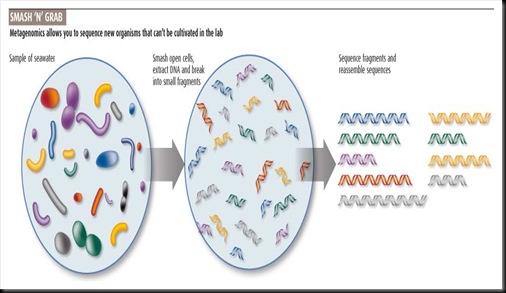Microorganisms, which form a significant part of the Earth’s biomass, have long attracted the interest of researchers the world over. Their mysterious nature has proved difficult to examine because they cannot grow in labs. However, thanks to the skills of researchers at the European Molecular Biology Laboratory (EMBL) in Heidelberg, Germany, this is about to change. Their creation of a new computational method to analyse environmental DNA samples will lead to an understanding of the microbial composition of their different habitats.
Researchers put microbes under the microscope Metagenomics, otherwise known as environmental DNA sequencing, has been instrumental in supporting researchers’ quests to study microorganisms. Researchers can now sequence the DNA found in environmental samples instead of having to analyse the genome of a specific organism. Sizeable amounts of sequence fragments are collected. These fragments, said the researchers, contain genetic information of many species forming communities that colonise a specific habitat.
“We have developed a new and very precise method to classify the microbial communities that are present in a given sample,” said Peer Bork, join co-ordinator of the Structural and Computational Biology Unit at EMBL. “We first identify informative DNA sequences in a sample and then map them onto the tree of life, a phylogeny of organisms with sequenced genomes, to find out which microbes are present and where yet unknown species fit into taxonomy and evolution.”
EMBL alumnus Christian von Mering explained that the team’s new method adds to the “current classification attempts based on individual RNA molecules and also has additional unique features.” Dr von Mering said the method helps researchers to better understand the development of microbes in their habitats.
Drs Bork and von Mering classified microbial communities that exist in four diverse environments: farm soil, acidic underground mine water, ocean surface and whale bones from the deep sea. Based on the findings, some microorganisms develop slowly, others faster. The underlying factor is their habitat. Soil organisms, for example, are slow to evolve, whereas ocean surface microbes change quickly.
Part of the research involved determining whether habitat preferences of microorganisms have remained the same throughout evolution. While some microbes have adapted to different lifestyles, said Dr Bork, the majority of them did not for long periods of time. He explained that it is often difficult for microbes to adapt to new environments or even vie against the established communities within them. Consequently, microbes cannot live everywhere, quashing earlier thoughts that they do.
The research data and novel computational methods used will offer more insight into biodiversity on Earth. Dr Bork and his team also worked with Phil Hugenholtz and Susannah Green Tringe of the California-based Genome Institute.
source:http://ec.europa.eu/research/headlines/news/article_07_02_15_en.html


No comments:
Post a Comment